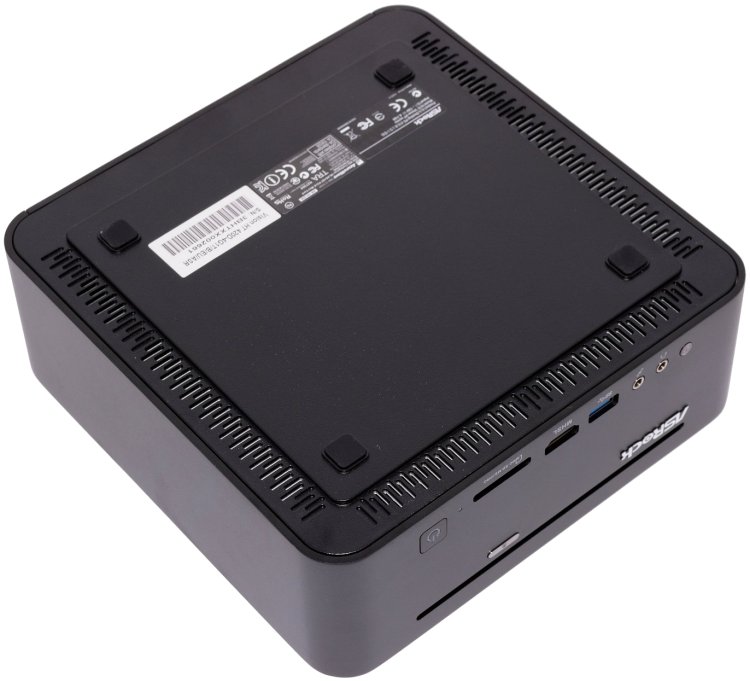It's been a few years since we published an enthusiastic review of Asrock's pricey yet powerful Vision 3D HTPC. The company has since kept our attention with annual updates, now on its fourth generation, the Vision HT 420D has received a proper upgrade to Intel's Haswell architecture as well as other improvements that contribute to the system's respectable list of features, making it one of the most impressive HTPCs to date.
Although the Vision HT 420D has largely picked up where the Ivy Bridge-based Vision HT 300 left off, the newest range isn't quite as diverse . The HT 300 series included models with Core i3 and i5 processors, while some were complete builds and others were barebones options that let you customize your memory and storage. For now, Asrock's latest Vision offerings are limited to two models: the 400D and the 420D.
The former is powered by a Core i3-4000M, has 4GB of memory and a 500GB hard drive, while the latter (which we're reviewing) boasts the i5-4200M, 4GB of RAM and 1TB of storage. Pricing has been one of our main concerns with previous Asrock Mini-PCs, and at $660, the 420D isn't exactly cheap. That figure excludes an operating system, though that's probably for the best considering the divide between Windows 7 and 8.
But before we get ahead of ourselves, $660 may not be unfair if it buys the right level of performance and we're going to explore the box's potential across various test scenarios, including encoding, general productivity and gaming – even if we don't expect much from Intel's integrated HD Graphics 4600.
Unveiling the Asrock Vision HT
The Vision HT 420D is based on the design of the 4-year-old Vision 3D series, though that doesn't mean it's dated and still caters well to modern hardware. The compact design and attractive exterior helps it blend into any home theater setup, while its small footprint allows it to fit just about anywhere.
The system measures 200mm (W) x 200mm (L) x 70mm (H) or a fraction wider and longer than previous models. It can be mounted either horizontally or vertically, although rubber feet are only on the bottom of the case. Based on the Mini-ITX form factor, it has an internal volume of 2.8L while weighing 1.8kg fully configured.
The Vision HT 420D feels very polished and it's obvious that Asrock has paid attention to minor details when designing its Mini PC series. The rear I/O panel has been given a coat of black paint, while all the ports have been properly labeled to make installation easier. The DVD player is a slot-loading model, so it's recessed into the case and blends in with the rest of the body.
Around back, you'll find a significant amount of connectivity options for such a small computer, including five USB 3.0 ports, one USB 2.0 port, LAN, HDMI, DVI, a powered eSATA 6Gb/s port, five audio jacks and an optical S/PDIF output. There is also a small DC-in power connection for a Delta Electronics 19v AC/DC adapter.
The front of the Vision HT 420D is almost identical to previous HT models, featuring a headphone and microphone jack, a 4-in-1 card reader and embedded slot loading optical drive. There is also a power button which is worked into the design nicely and emits a blue light when active.
What's new is the MHSL (Mobile High Speed Link) port which replaces one of the USB 3.0 ports, so there's only one USB 3.0 port on the front panel. If you're scratching your head over MHSL, so did we. We had only heard of MHL...
In short, it's Asrock's modified version of MHL. Apparently, MHSL is Asrock's exclusive HD video and digital audio interface for connecting mobile phones, tablets or other portable devices to your PC and then to a HDMI monitor.
Not only does it support the MHL standard's features, such as charging while browsing the portable device's content on another monitor. MHSL can also sync data between your mobile device and PC, plus it supports Asrock's HDMI-in feature which lets devices with HDMI-out to work via MHSL too.
Given that the Vision HT 420D is a multimedia device designed for the living room, this feature makes a lot of sense.
By default, the Vision HT 420D comes bundled with a Media Center Edition remote control to provide a convenient way to watch movies or listen to music from the comfort of your couch, completing the Vision HT 420D as an ideal HTPC solution.




